Understanding Rust
- Published:
- Length: 946 words
- Reading Time: 5 minutes
I ran into an unexpected roadblock while drawing the design for my latest work-in-progress, Not Today. Here is the digital template:
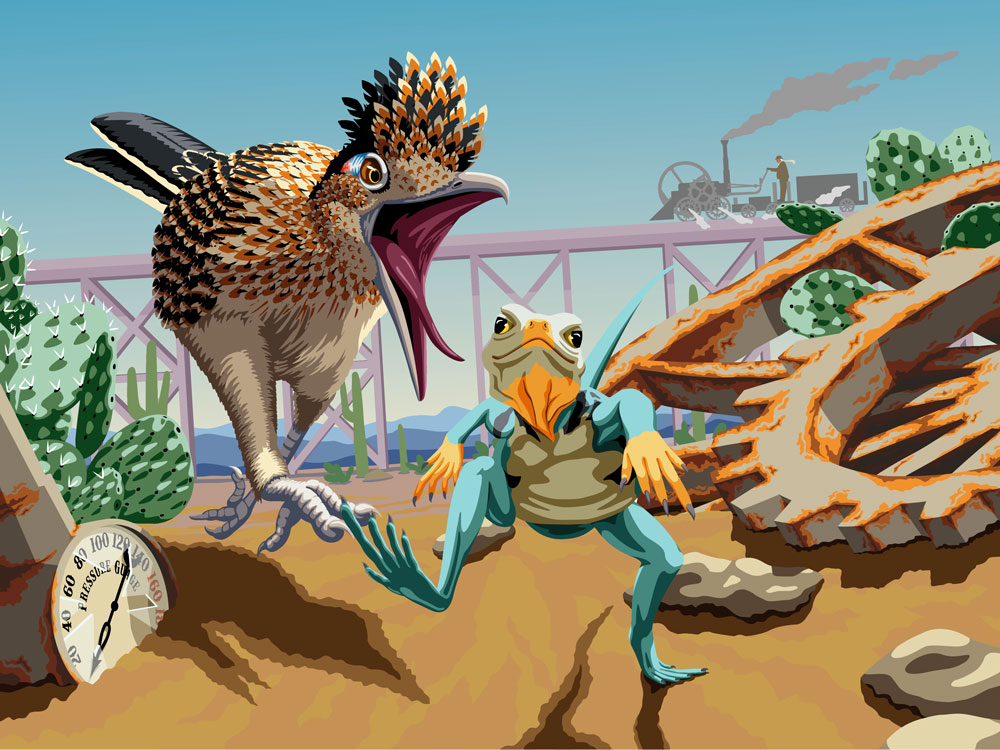
The roadblock I encountered had to do with the iron wheel on the right side of the design. My vision for this picture was to have the lizard and roadrunner chasing each other through a steampunk junkyard between broken, decaying remnants of steam-powered machines. Metal rusts as it decays, so that would be a required element to conveying the scene from my vision. Yet as I started to draw this wheel, I realized I had no idea how to draw rust.
Inspiration vs Comprehension
Artists are naturally inspired by the living world around us. That makes sense. But artists, like myself, who specialize in realism, naturalism, or any form of art that attempts to accurately recreate the living world within a creative medium have to take that inspiration one step further — we have to study and understand why the world around us looks the way it does. Without that knowledge of why and how, it's impossible to accurately recreate an object or place within our chosen medium.
That was the position I found myself in when drawing Not Today. I knew what rust was, but I'd never studied it. What color was it? How did it form? What did a metal object look like in various stages of oxidation? Without the answers to these questions, I had no idea how to draw rust and make it look believable.
Revelation #1
In order to answer those questions, I did what I always do: Consulted Google. I went searching for pictures of rusty metal.
The first images I found weren't helpful. They showed objects that were completely covered in rust, like this padlock: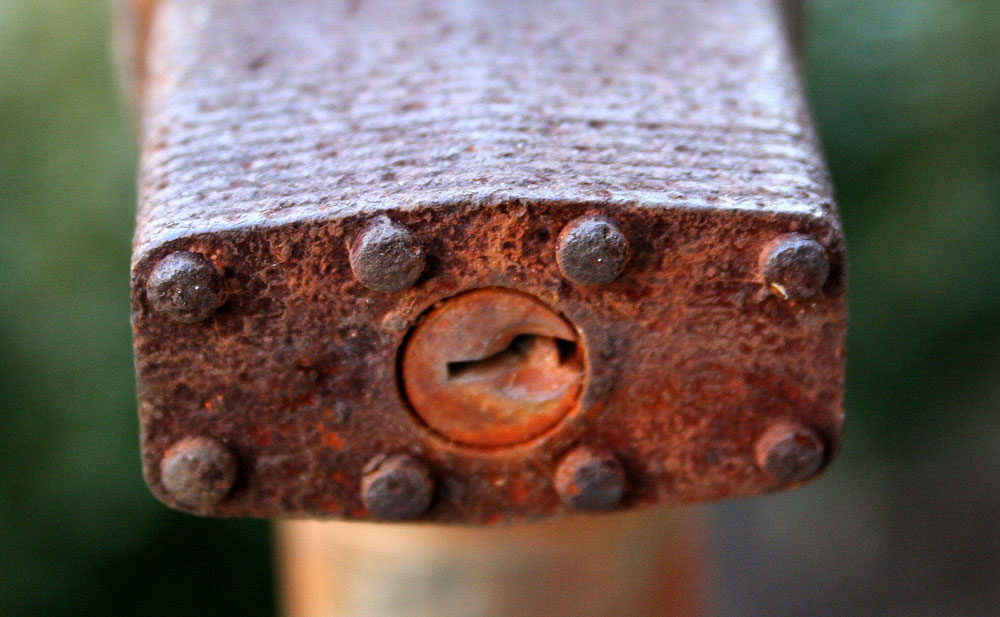
This padlock was too rusty to be a good reference. I wanted my wheel to look like it was just starting to rust, so most of its metal would still be visible. The padlock above was already too far gone; it didn't give me any clues to what it would have looked like when it was starting to oxidize.
What I did take away from pictures like this is rust's texture. Rust isn't smooth; it's bumpy and uneven, which would be a notable contrast to the smooth metal on which it's forming.
Revelation #2
The next image I came across was enlightening in a different way:
I realized that rust gets darker as it ages, so the area that has had the most time to oxidize (the center) is the darkest value. Areas that are just starting to oxidize are the lightest value.
Revelation #3
This next photo was the real eye-opener for me:
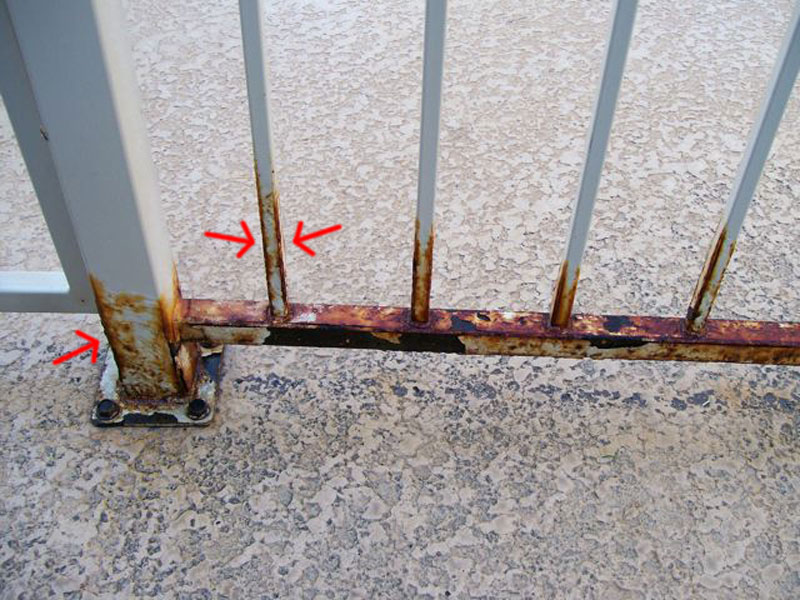
I'd finally found a picture of an object sufficiently early in the oxidation process to help me understand how rust covers a surface. The fence above revealed that rust starts forming on the edges and corners of metal, not in the center. Rust has formed along the corners of the fence's vertical bars — indicated by the red arrows — but the centers of those bars are still somewhat untouched.
What color is rust?
The last missing piece for me was color. The photos above show clearly recognizable rust, but they were all so dull. I wanted bright, saturated COLOR. So I found this stock photo to colorpick:
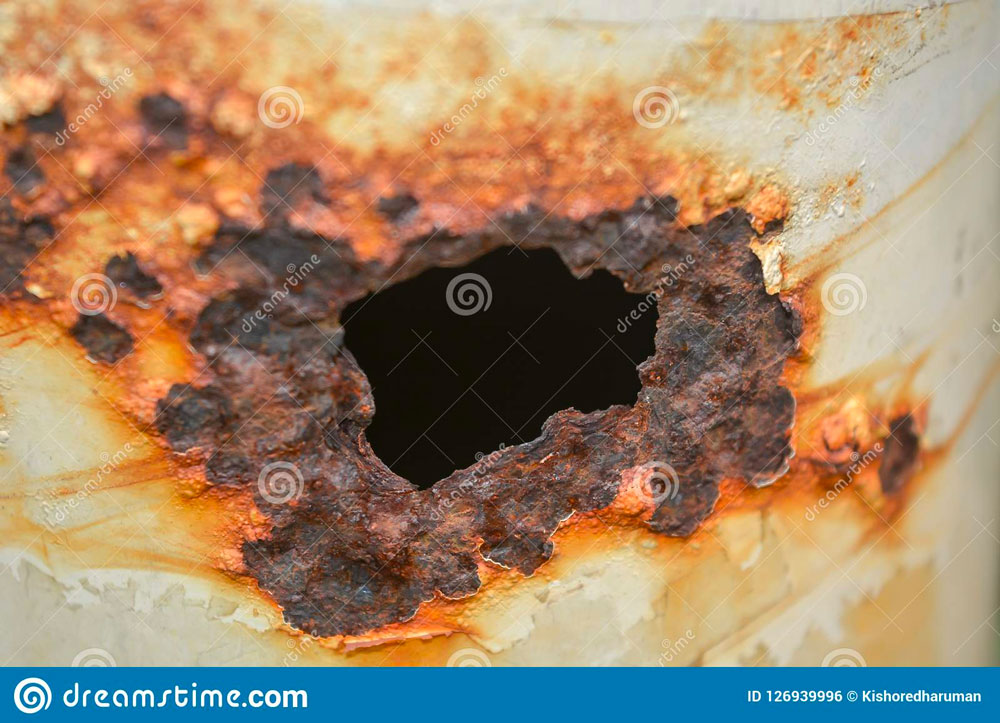
I further tweaked my color choice once I started applying color to my template.
Applying Knowledge to Design
Once I had an understanding of how rust forms and what it looks like, I was confident to start drawing. This is how I applied my knowledge to the design of rust on my metal, steampunk wheel. (Match the red numbers on the image to the numbered list below the image.)
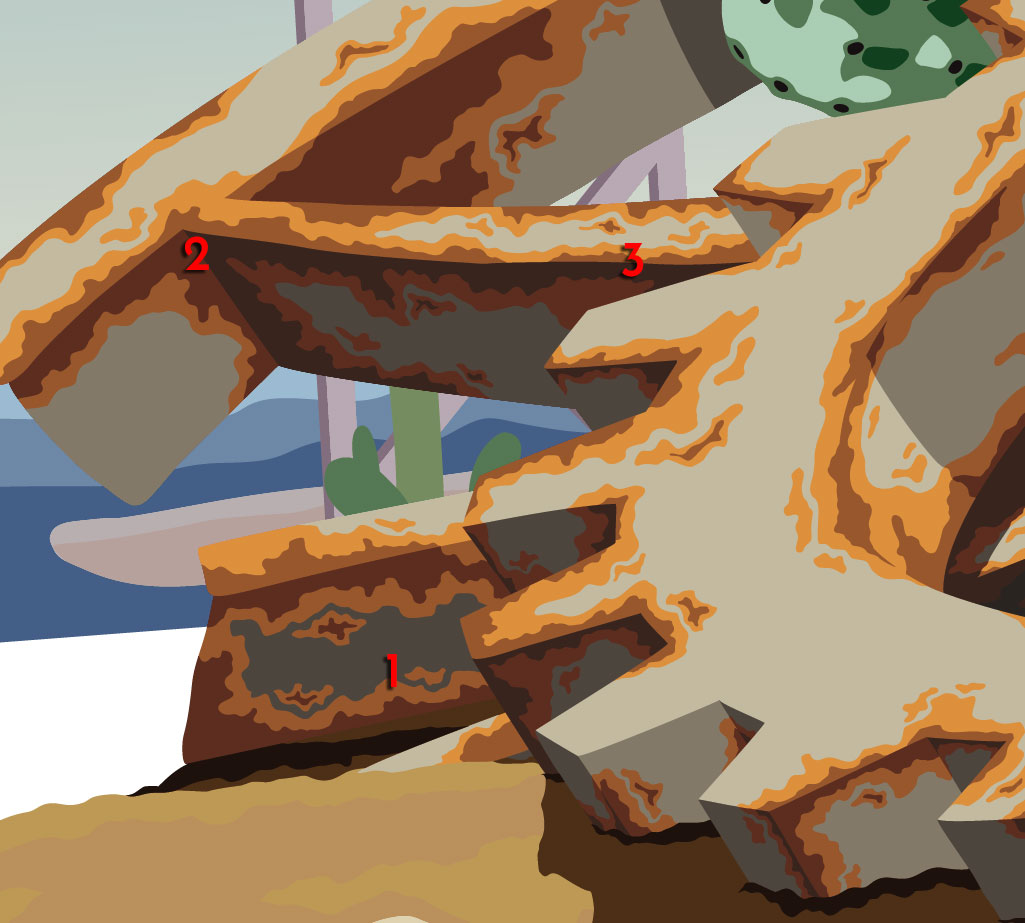
I've drawn the rust with bumpy lines, in stark contrast to the metal wheel's rigid exterior.
In every area, the rust is made from two values of orange: A lighter outer layer and a darker center layer.
I've drawn the rust along the edges and seams of the metal. In some places it extends into the middle, but it's predominately along the outer edges.
And here is a close-up of the in-progress quilt.
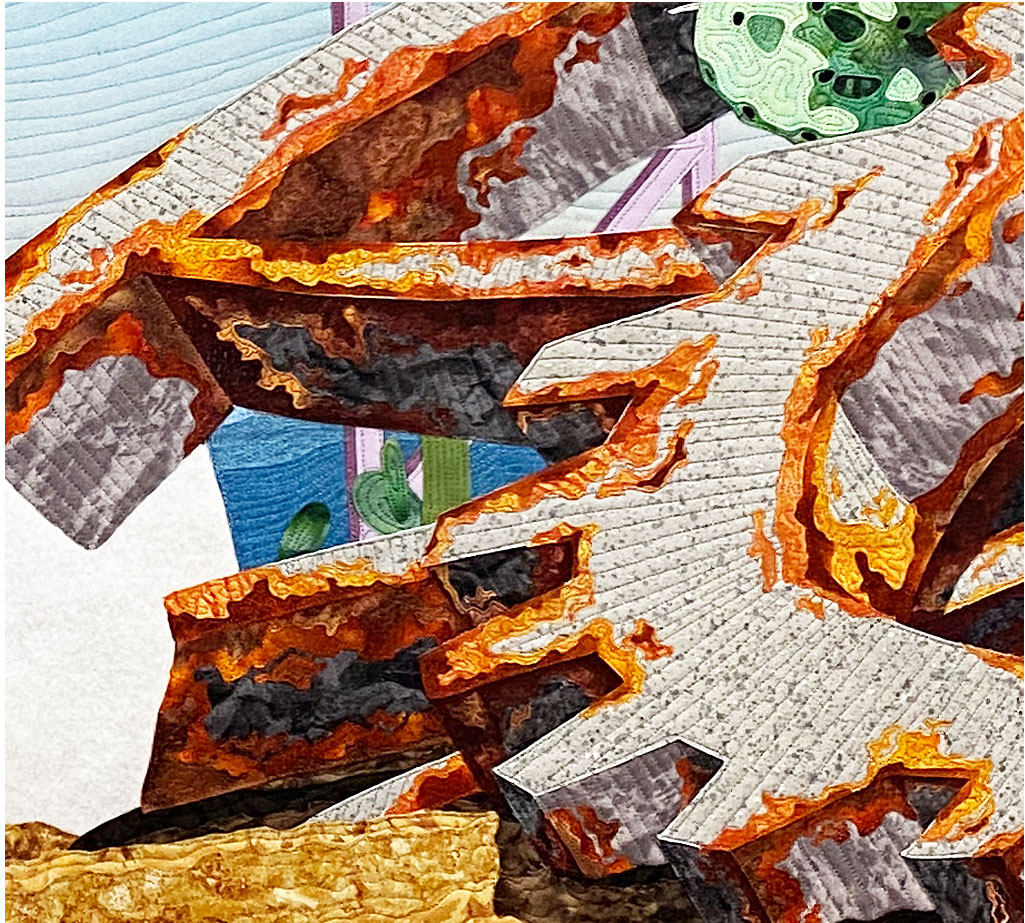
Conclusion
Understanding what we see is a skill that must be learned and practiced like any other, but you can train your eyes and brain to automatically pick up on those details. Here's how to practice with, for example, a flower. Ask yourself questions like these, and then study the flower to figure out the answers:
- Is it all one color, or do the petals have multiple variations of color?
- How do the petals attach to the bud?
- Are the petals all the same size?
- How do the petals unfurl? Do they spiral out like a rose or gardenia?
- How do the leaves attach to the stem? Do they grow out of a central point, wrapped around the stem, or do they have their own stalks?
- Is the stem woody or green?
- What kind of insects are on it?
- Do the leaves or petals have visible veins? What do those veins look like?
Answering questions like these will help you notice the details — and those details are critical for accurately recreating any object in art.
